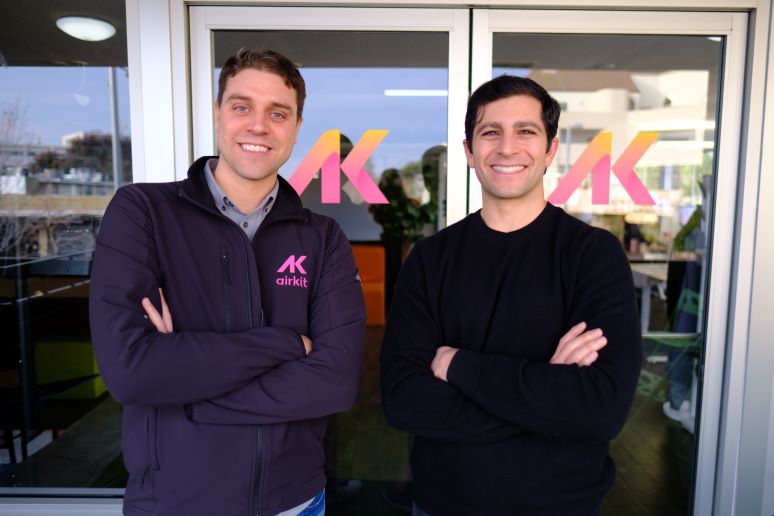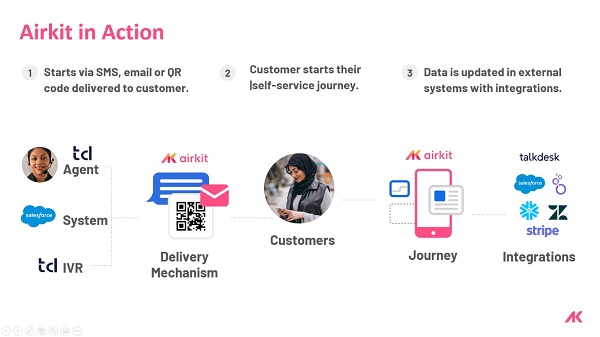Start-up
Airkit officially
launches today, simultaneously announcing general availability of its low-code platform for digital customer engagement. Airkit, which has been operating under the radar with $28 million in funding from Accel, Emergence Capital, and Salesforce Ventures, already boasts digital entities SkipTheDishes, Turo, and Agero; logistics company EZR Logistics; a Fortune 500 insurance company; and a Fortune 1000 bank among early customers that have deployed digital customer experiences on its platform.
Prior to the announcement, I interviewed Airkit co-founders
Stephen Ehikian, CEO, and
Adam Evans, CTO, over video. This entrepreneurial pair are betting that they will strike proverbial gold for a second time in their young careers. Ehikian had been COO and Adams co-founder and CTO of RelateIQ, which Salesforce acquired in 2014 for $390 million. Salesforce morphed RelateIQ into SalesforceIQ, its first AI offering for CRM customers.
Launched in 2015 and retired this past March, SalesforceIQ combined data from email systems, phone calls, and appointments to augment or replace relationship management tools. Ehikian and Evans remained at Salesforce for about three years, honing their big company chops, before joining forces again to create Airkit. Salesforce Ventures’ investment in this latest company is certainly a sign that the pair are headed in an equally innovative direction with Airkit.
3 Trends Converge
While at Salesforce, Ehikian explained, he and Evans “observed a few key trends that we were excited to capitalize on as we thought about our next company.” One was the rise of customer experience (CX), where companies were adopting Salesforce but really struggling to figure out how to modernize the end-customer touchpoints. Related to that, they saw customer experience as the next frontier of creating truly differentiated product offerings.
The next trend Ehikian and Evans wanted to incorporate into a new venture was the rise of automation, as related to robotic process automation, or the process of automating back-end processes. Toward that end, they started thinking about extending the RPA analogy to customers, automating a number of customer-facing experiences.
The third trend the pair sought to address was the imbalance created by an increasing demand for digital tools and applications and a world where there are not enough software engineers graduating from college to support that demand. Just as Salesforce has done a great job empowering a next generation of developers who did not know how to code, Airkit founders saw an opportunity to “empower that same archetypical builder to be able to build customer-facing experiences.” Hence the emphasis on Airkit as a low-code solution, one suitable for use by citizen developers (see a related
No Jitter post from February 2019).
Bringing these trends together, Airkit’s mission is to extend the digital transformation journey every company is on by helping to digitize the last mile — meaning, the customer touchpoints, Ehikian said. In the past few months, many companies have found themselves having to scale by adding more headcount in the contact center. Airkit wants to allow companies to scale with technology instead. By deploying Airkit, companies can enable consumers to bypass the human agent and deliver a digital self-service experience.
The Digital Journey
The graphic below, Airkit in Action, highlights that while a customer may start and finish in a digital channel, voice often factors in as part of the customer journey. Either on the front end or back end of an interaction, Airkit can integrate with a contact center to receive an interaction or deliver a live agent experience to customers whose needs extend beyond self-service. In the graphic, you might also note a tie-in with CCaaS provider Talkdesk. The Airkit team has hit the ground running, creating a go-to-market partnership with Talkdesk (as well as being able to integrate to other premises or cloud contact center solutions).
To learn more about the integration between Airkit and Talkdesk, tune into a
webinar on Thursday, Oct. 8, to hear from myself, Ehikian, and Cory Haynes, Talkdesk vice president, financial services strategy, for a discussion on the latest trends shaping CX for financial services.











